- Arms
- The photograph below shows the arms of the mature male holotype. The proximal and distal fields of enlarged suckers are apparent.
- Eyes
- Large, 45% of ML.
- Large, 45% of ML.
- Funnel
- Funnel organ with two, separate, elongate pads.
- Funnel organ with two, separate, elongate pads.
- Fins
- Without lobe near anterior insertion in preserved animals.
- Fin span ca. 4 times fin length.
- Gills
- Small, half-orange appearance.
- 7 or 8 primary lamellae per gill.
- Optic lobes and nerves
- Optic lobes kidney-shaped.
- Two or three optic nerve bundles pass through/by white body.
- Digestive tract
- Radula absent.
- Glandular-like area on buccal mass [presumably the posterior salivary glands].
- Esophagus dialated forming crop-like structure.
- Digestive gland bilobed.
- Intestine apparently slightly shorter than esophagus; forms S-shape.
- Beaks
- Lower beak pointed; hood small; without folds or ridges on lateral walls.
- Male reproductive system
- Accessory glands "2 and 3" approximately equal in size.
- Penis relatively long.
- Spermatophores oval, 1-2 mm long.
- Female reproductive system
- Unknown as females cannot be identified with certainty.
- Unknown as females cannot be identified with certainty.
- Shell
- Stout with short, flaring lateral wings.
- Outer surface of saddle flat, without inrolling ridges; inner surface convex.
- Lateral wings taper to acute points.
- Pigmentation
- Octopod reddish-brown in preserved specimens.
- Areolae not observed in eastern Atlantic specimens.
- Measurements
Comments
Except for the first illustration, the above description is taken from Villanueva et al. (in press).

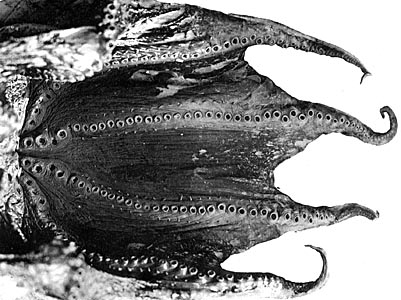
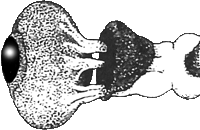
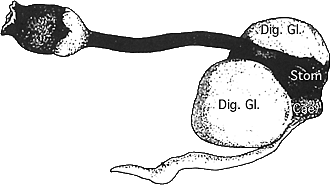
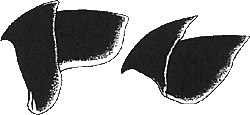
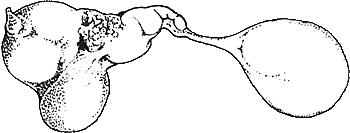
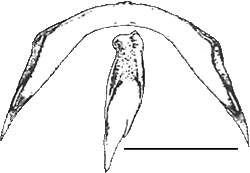



 Go to quick links
Go to quick search
Go to navigation for this section of the ToL site
Go to detailed links for the ToL site
Go to quick links
Go to quick search
Go to navigation for this section of the ToL site
Go to detailed links for the ToL site